
Ultima is a series of open world fantasy role-playing video games from Origin Systems, created by Richard Garriott. Electronic Arts has owned the brand since 1992. The series had sold over 2 million copies by 1997.

A role-playing video game, a role-playing game (RPG) or computer role-playing game (CRPG), is a video game genre where the player controls the actions of a character immersed in some well-defined world, usually involving some form of character development by way of recording statistics. Many role-playing video games have origins in tabletop role-playing games and use much of the same terminology, settings, and game mechanics. Other major similarities with pen-and-paper games include developed story-telling and narrative elements, player character development, complexity, as well as replay value and immersion. The electronic medium removes the necessity for a gamemaster and increases combat resolution speed. RPGs have evolved from simple text-based console-window games into visually rich 3D experiences.
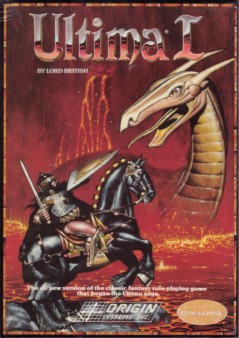
Ultima, later known as Ultima I: The First Age of Darkness or simply Ultima I, is the first game in the Ultima series of role-playing video games created by Richard Garriott, originally released for the Apple II. It was first published in the United States by California Pacific Computer Company, which registered a copyright for the game on September 2, 1980 and officially released it in June 1981. Since its release, the game has been completely re-coded and ported to many different platforms. The 1986 re-code of Ultima is the most commonly known and available version of the game.

Ultima IV: Quest of the Avatar, first released in 1985 for the Apple II, is the fourth in the series of Ultima role-playing video games. It is the first in the "Age of Enlightenment" trilogy, shifting the series from the hack and slash, dungeon crawl gameplay of its "Age of Darkness" predecessors towards an ethically-nuanced, story-driven approach. Ultima IV has a much larger game world than its predecessors, with an overworld map sixteen times the size of Ultima III and puzzle-filled dungeon rooms to explore. Ultima IV further advances the franchise with dialog improvements, new means of travel and exploration, and world interactivity.
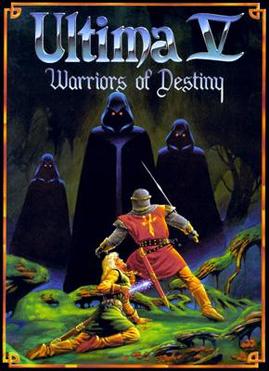
Ultima V: Warriors of Destiny is the fifth entry in the role-playing video game series Ultima released in March 1988. It is the second in the "Age of Enlightenment" trilogy. The game's story takes a darker turn from its predecessor Ultima IV. Britannia's king Lord British is missing, replaced by a tyrant named Lord Blackthorn. The player must navigate a totalitarian world bent on enforcing its virtues through draconian means.

Ultima VI: The False Prophet, released by Origin Systems in 1990, is the sixth part in the role-playing video game series of Ultima. It is the third and final game in the "Age of Enlightenment" trilogy. Ultima VI sees the player return to Britannia, at war with a race of gargoyles from another land, struggling to stop a prophecy from ending their race. The player must help defend Britannia against these gargoyles, and ultimately discover the secrets about both lands and its peoples.

Ultima VII Part Two: Serpent Isle is a role-playing video game released in 1993 as part of the core Ultima series, its story beginning eighteen months after the conclusion of Ultima VII: The Black Gate. In Serpent Isle, the Avatar follows Batlin to the eponymous land called Serpent Isle, finding three city-states founded by those who left Britannia generations before and ancient ruins from a still-older lost civilization that was there long before them.

Ultima Underworld: The Stygian Abyss is a first-person role-playing video game developed by Blue Sky Productions and published by Origin Systems. Released in March 1992, the game is set in the fantasy world of the Ultima series. It takes place inside the Great Stygian Abyss: a large cave system that contains the remnants of a failed utopian civilization. The player assumes the role of the Avatar—the Ultima series's protagonist—and attempts to find and rescue a baron's kidnapped daughter.
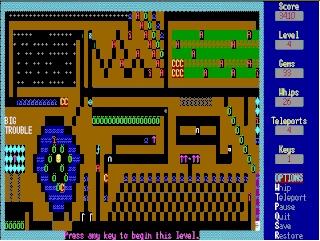
Kroz is a series of Roguelike video games created by Scott Miller for IBM PC compatibles. The first episode in the series, Kingdom of Kroz, was released in 1987 as Apogee Software's first game. It was also published on Big Blue Disk #20. Kroz introduced the scheme of the first episode being free and charging money for additional episodes, a technique which defined the business model for Apogee and was adopted by other MS-DOS shareware publishers.
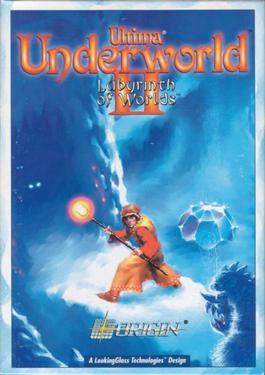
Ultima Underworld II: Labyrinth of Worlds is a 1993 first-person role-playing video game developed by LookingGlass Technologies and published by Origin Systems. As the sequel to Ultima Underworld: The Stygian Abyss, the game is set in the Ultima fantasy universe. Players assume the role of the Avatar—the protagonist of the Ultima series—and adventure through multiple dimensions while seeking to prevent the evil Guardian from achieving world domination. Progression is largely nonlinear and the game allows for emergent gameplay.
An action role-playing game is a subgenre of video games that combines core elements from both the action game and role-playing genre.

The Elder Scrolls: Arena is an open-world action role-playing video game developed and published by Bethesda Softworks. The first game in the Elder Scrolls series, it was released for MS-DOS on March 25, 1994. The game follows the player trying to uncover a conspiracy against Emperor Uriel Septim VII.

The Dungeon Revealed is a dungeon crawl PC game created by John Raymonds and published by Woodrose Editions in 1987. The game is an enhanced commercial release of Raymonds' previous game The Dungeon of Doom, released as shareware in 1985. A final version of The Dungeon of Doom was released as a free demo for The Dungeon Revealed in 1987. Both games were released for Mac OS and were compatible with versions as late as System 7.
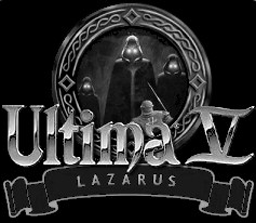
Ultima V: Lazarus is a fan-made remake of Ultima V. The game uses Gas Powered Games' Dungeon Siege engine, and that game is required to play the remake. It is an attempt to reconstruct the original title, including an elaborated plot, strategy elements and updated conversational mechanisms to resemble 2005 game dialog systems.
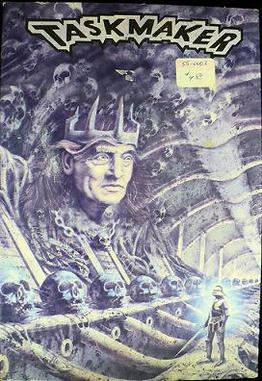
TaskMaker is a role-playing video game for the Macintosh. It was developed by American software company Storm Impact. Originally published in 1989 by XOR Corporation, it was upgraded and re-released as shareware in 1993 by Storm Impact, featuring color graphics and compatibility with newer versions of the classic Mac OS. The player controls a protagonist who is under the mentorship of the eponymous TaskMaker, a ruler who assigns ten different quests. Completing these quests involves solving various gameplay puzzles, along with battling monsters, and the final task involves a battle against the TaskMaker himself. TaskMaker received mixed reception regarding its overall storyline and gameplay.
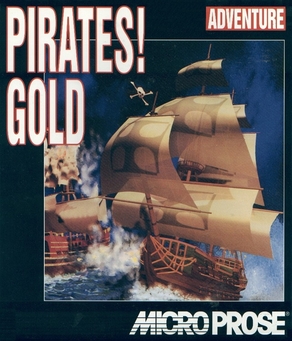
Pirates! Gold is a 1993 computer game, a remake to Sid Meier's 1987 release, Sid Meier's Pirates!
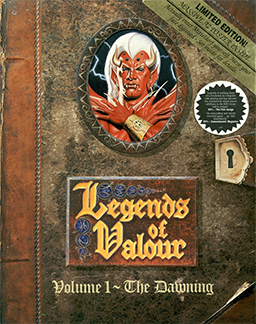
Legends of Valour is a role-playing video game developed by Synthetic Dimensions and released by U.S. Gold and Strategic Simulations in 1992 for the Amiga, Atari ST and MS-DOS, with the additional FM Towns and PC-98 versions in 1993-1994 in Japan only. As the game was planned to be a first part of the series, its full title is Legends of Valour: Volume I – The Dawning. The proposed unreleased sequel to Legends of Valour was to take place in the world outside Mitteldorf, the enclosed city where the entirety of Legends of Valour takes place.

Menzoberranzan is a 1994 role-playing video game created by Strategic Simulations (SSI) and DreamForge Intertainment. Menzoberranzan uses the same game engine as SSI's previous game, Ravenloft: Strahd's Possession (1994), and is set in the Advanced Dungeons & Dragons Forgotten Realms campaign setting.

BSS Jane Seymour: Federation Quest 1 is a 1990 science fiction role-playing video game published by Gremlin Graphics for the Amiga, Atari ST, and MS-DOS. For the North American release and DOS release in Europe, the game was co-published by Gremlin and Konami, and renamed to Spacewrecked: 14 Billion Light Years from Earth.


















